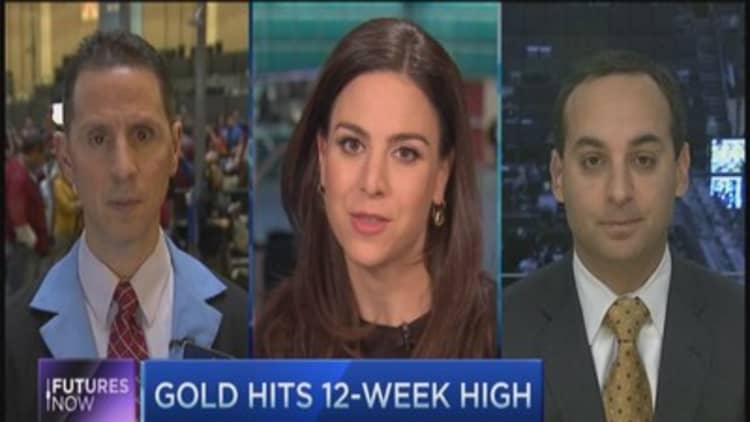Gold prices jumped to a 4-month high on Thursday as European shares and the dollar turned lower after a shock move by Switzerland to abandon its three-year cap on the franc sent Europe's shares and bond yields tumbling.
U.S. gold futures for delivery in February settled $30.30 higher, at $,264.80 an ounce, its highest close since early September.
rose as much to its highest level since Sept. at $1,260.30 an ounce in earlier trade and was last up 2.3 percent at $1,257 an ounce.

"Gold is gaining from a risk-off situation because nobody expected the Swiss central bank not to keep that cap, and this has created potential big losses in many places and is obviously triggering some flight to safety," Saxo Bank senior manager Ole Hansen said.
European stocks plunged and the dollar fell 0.2 percent against a basket of main currencies after the Swiss National Bank's move, which is seen potentially preceding outright money-printing by the European Central Bank at its policy meeting next week.
Read MoreWhy going gold is the way to go
"This is happening a week before the ECB meeting, which could add even further pressure to the euro ... more QE in the euro zone is a double-edge sword for gold in dollar-denominated terms but gold in euro terms should benefit,'' Hansen said.
Gold has benefited from years of increased central bank liquidity following the 2008 financial crisis, but more monetary stimulus in the euro zone could result in a stronger dollar and in turn lower gold prices.
Euro-denominated gold rose to a new peak of 1,077.09 euros an ounce, its highest since May 2013.
Gold prices are up nearly 6 percent so far this month, after two straight years of declines, but the outlook for the year remains clouded.
UBS lowered its gold price forecast for the year to $1,190 from $1,200, saying it had underestimated the downside risks earlier.
"Downside risks have slightly been increased by the decline in oil prices given the potential positive impact this would have on the U.S. economy and the implied absence of an inflation threat," UBS said in a note.

